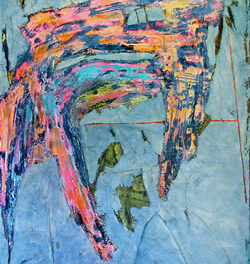The young maestro Stilian Kirov (born in Sofia, Bulgaria in 1984) was elegant and brimming with musical effervescence as he took his place as the fourth candidate to vie for the position of Music Director of the Winston-Salem Symphony Saturday night, with a repeat performance Sunday afternoon in the Stevens Center of the University of North Carolina’s School of the Arts.
The soloist in this concert was the young African-American pianist, Terrence Wilson, who was featured in Beethoven’s youthful Concerto No. 1 in C, Opus 15. Apart from a couple of minor finger-foibles in the first movement, this was spectacular playing, especially the lovely reverie of the second movement and jolting “unbuttoned” mood of the third movement (to quote David B. Levy, program annotator).
The concert opened with the intriguing re-orchestration of the slow movement of the string quartet Andante for Strings by American composer Ruth Crawford-Seeger, composer and eventual step-mother of Pete Seeger. The work is short (under five minutes) and decidedly modern, in a dramatic and non-offensive way, with some beautiful and striking moments. I wish the conductor had offered to play it a second time, as soon as the applause had died down!
After intermission we were treated to a powerful performance of the complete Second Symphony in E minor, Opus 27 of Sergei Rachmaninoff. The symphony, replete with familiar romantic themes, clocks in at an hour; although Rachmaninoff has authorized a much shorter version, almost all modern performances choose the complete symphony.
The performance was accompanied by changes in the lighting behind the orchestra, at first subtle slow changes as the music progressed, but later in the concert, some changes became dramatic – from gold to green, green to red, from red to blue. The modern technology which has given us the low voltage, low temperature LED (“light-emitting diode”) now allows us to change the color emitted by diodes electronically, without needing to change gels (colored filters) or intervening mechanically at all. The result is a quasi-seamless rainbow effect on stage!
Of course, this brings up the esthetic question, “Does the projected or ambient color enhance musical appreciation equally for all, or is there an issue of personal preferences?” There has been a long-simmering debate about interactions of sound and color which some claim vociferously and others deny; this involves the study of synaesthesia, the blending of one sense with another – such as tasting shapes, seeing certain letters in color, hearing certain music in color, certain words or colors provoking smells, etc. Neuroscientists are studying this field; musicians, poets, cooks and others have long indulged their private fantasies and incorporated them into compositions (Scriabin’s “Poem of Ecstasy”), poetry (Charles Baudelaire), novels (Vladimir Nabokov) and songs (Pharrell Williams).
However, the “effects” of the swift changes of color were distracting from the music. I suggest more thought be given to the interaction of music and color; this is a tool, not a toy!
The next candidate for Music Director, Vinay Parameswaran, will conduct the Winston-Salem Symphony in the first week of March, 2023.











